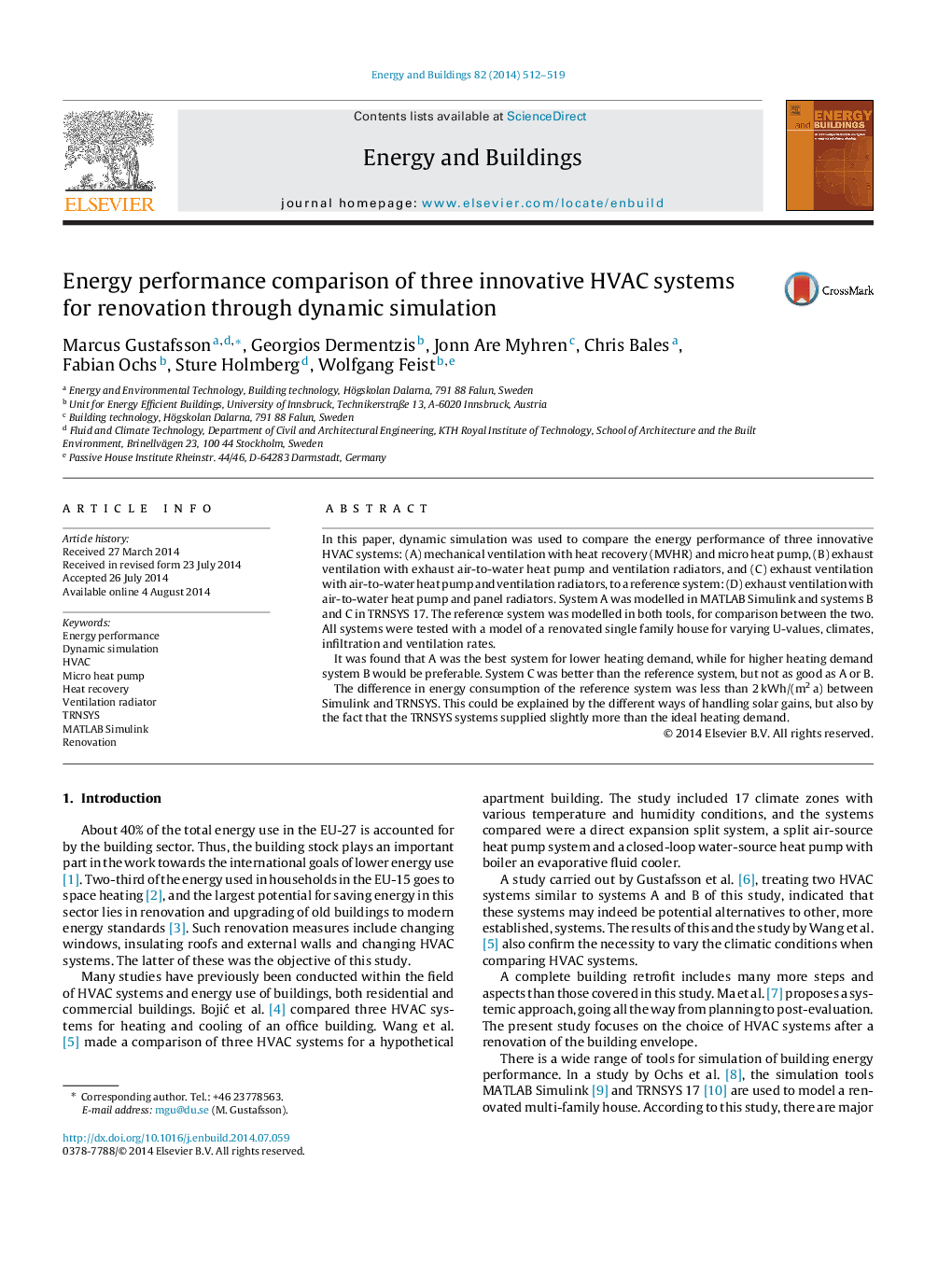| Article ID | Journal | Published Year | Pages | File Type |
|---|---|---|---|---|
| 262692 | Energy and Buildings | 2014 | 8 Pages |
•Heat recovery of exhaust air is very beneficial in cold climates.•Micro heat pump and air heat recovery is best applied in passive houses.•Ventilation radiators work best in houses with higher heating demand.•Exhaust air heat pump works better than air heat recovery if infiltration is high.•TRNSYS17 and MATLAB Simulink are quite close in building energy simulation.
In this paper, dynamic simulation was used to compare the energy performance of three innovative HVAC systems: (A) mechanical ventilation with heat recovery (MVHR) and micro heat pump, (B) exhaust ventilation with exhaust air-to-water heat pump and ventilation radiators, and (C) exhaust ventilation with air-to-water heat pump and ventilation radiators, to a reference system: (D) exhaust ventilation with air-to-water heat pump and panel radiators. System A was modelled in MATLAB Simulink and systems B and C in TRNSYS 17. The reference system was modelled in both tools, for comparison between the two. All systems were tested with a model of a renovated single family house for varying U-values, climates, infiltration and ventilation rates.It was found that A was the best system for lower heating demand, while for higher heating demand system B would be preferable. System C was better than the reference system, but not as good as A or B.The difference in energy consumption of the reference system was less than 2 kWh/(m2 a) between Simulink and TRNSYS. This could be explained by the different ways of handling solar gains, but also by the fact that the TRNSYS systems supplied slightly more than the ideal heating demand.
